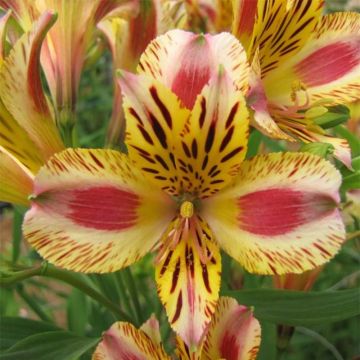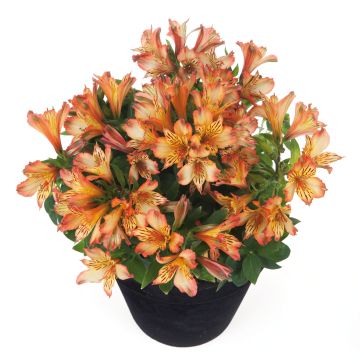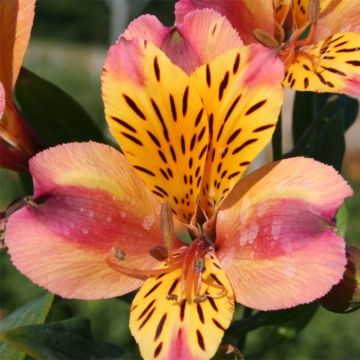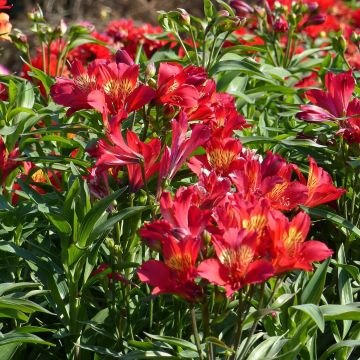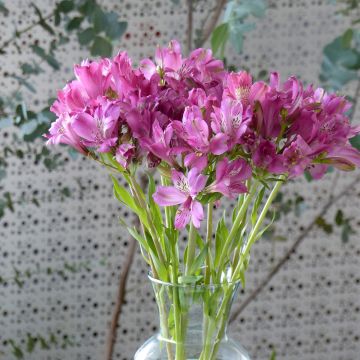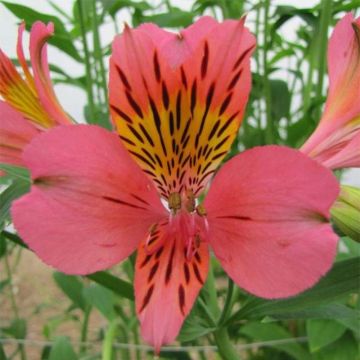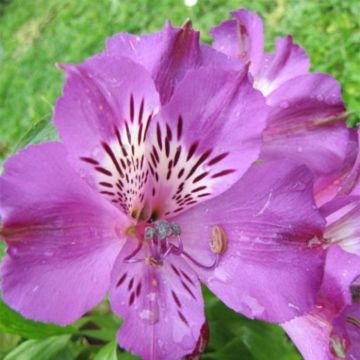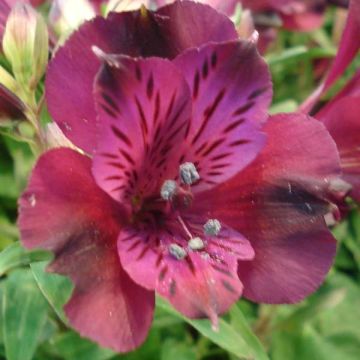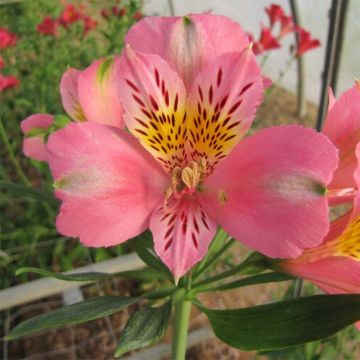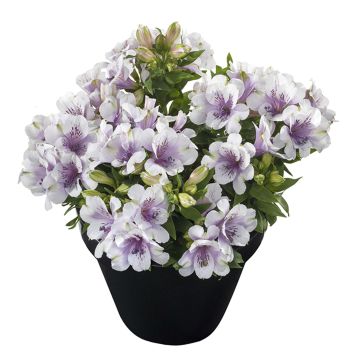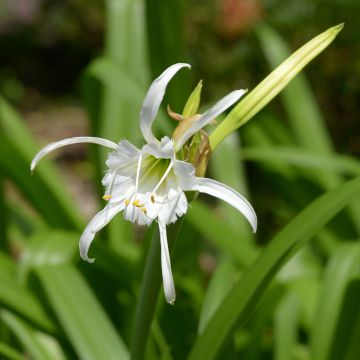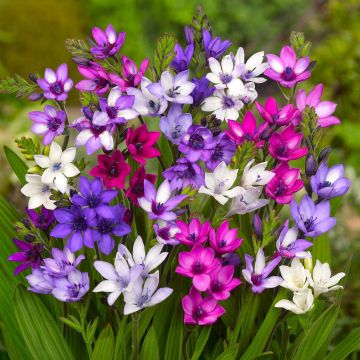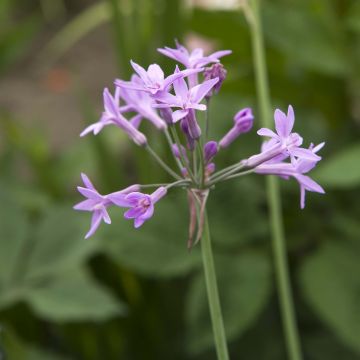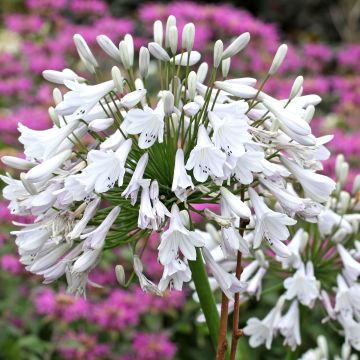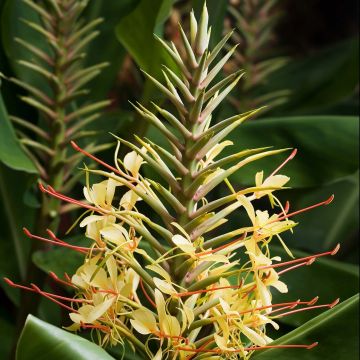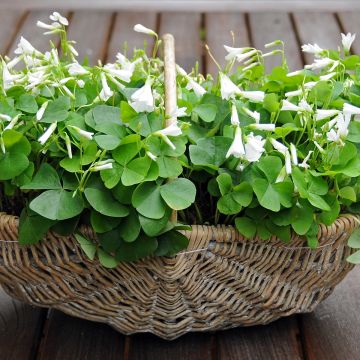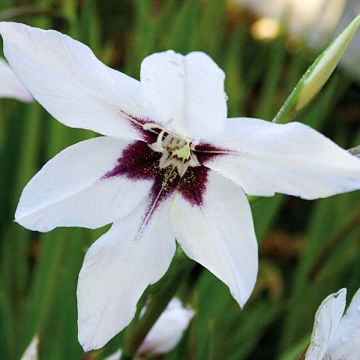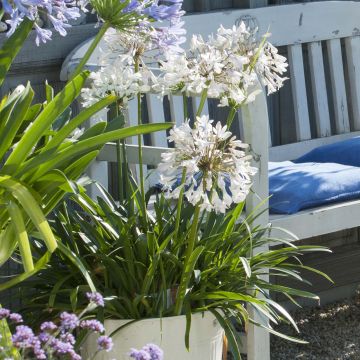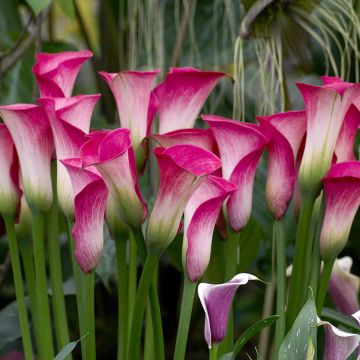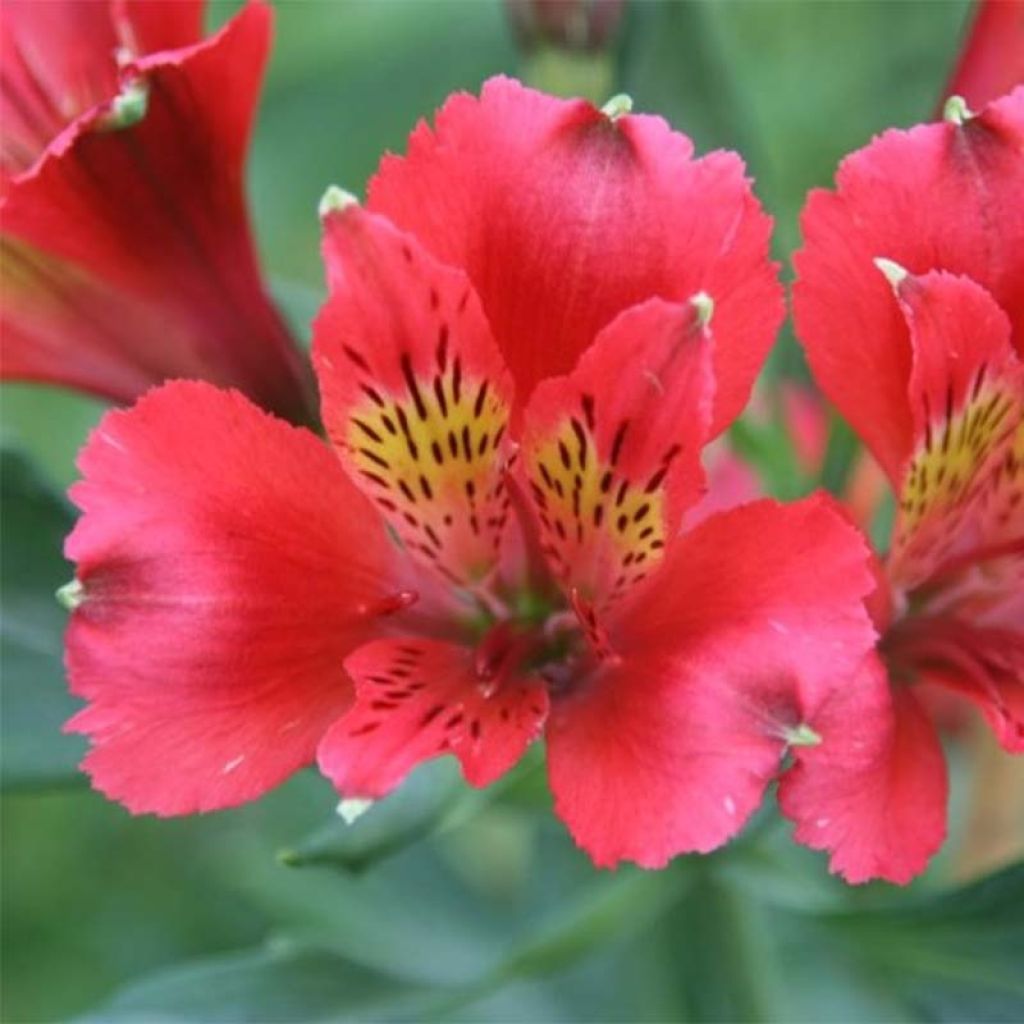

Alstroemeria Duchesses d'Anjou Diane
Alstroemeria Duchesses d'Anjou Diane
Alstroemeria Duchesses Diane
Peruvian lily 'Diane'
The young plants received were quite miserable, and simply disappeared (eaten by slugs??) before producing any flower.
Anaïs, 22/01/2022
This item cannot be shipped to the selected country
Delivery charge from €5.90
More information
Schedule delivery date,
and select date in basket
This plant carries a 12 months recovery warranty
More information
We guarantee the quality of our plants for a full growing cycle, and will replace at our expense any plant that fails to recover under normal climatic and planting conditions.
From €5.90 for pickup delivery and €6.90 for home delivery
Express home delivery from €8.90.
Does this plant fit my garden?
Set up your Plantfit profile →
Description
Alstroemeria Duchesses d'Anjou 'Diane' is one of the most colourful varieties in the excellent Duchesses d'Anjou series of Peruvian lilies, chosen for their medium size, strong stems, and abundant flowering. These plants are wonderful in beds and containers. It bears beautiful red flowers spotted with yellow. The plant can withstand winter in open ground in regions that are not too cold, under a protective mulch. Its flowers, carried by thick and sturdy stems, are perfect for bouquets.
Alstroemeria Duchesses d'Anjou 'Diane' is a recent horticultural variety, obtained near Angers. All modern Peruvian lilies are hybrids of several tuberous species native to South America, particularly the Chilean Andes. These high-altitude plants belong to the Alstroemeriaceae family. They are somewhat hardy, and appreciate moist but well-drained soils in lightly wooded areas. They are slow to establish. Depending on growing conditions, they will either die or become invasive! They are almost indestructible once you have found the right spot for them.
Like all plants in the series, Alstroemeria Duchesses d'Anjou 'Diane' is easy to grow in good horticultural soil that remains moist. The plant quickly forms dense and rounded clumps with leafy stems not exceeding 35cm (14in) in height when flowering, with a spread of 30 to 35cm (12 to 14in). Flowering occurs from June to October. The flowers are gathered in terminal umbels. They consist of 3 narrow central petals, adorned with yellow spots streaked with brown on a coral-red background, surrounded by 3 wider petals that are also coral-red. The foliage is arranged on the upper part of the stems. The leaves are dark green with a slight bluish tint. The plant disappears in winter, leaving only the trailing stump with fleshy roots underground. The roots are sensitive to transplantation shock, especially in older plants. It can withstand temperatures down to -7°C (19.4°F).
Alstroemeria Duchesses d'Anjou 'Diane' is perfect for brightening up flower beds and planters for weeks on end. On a patio or balcony, it forms a bouquet of flowers with exotic charm that rivals balcony geraniums in brilliance. In flower beds, this plant will go well, for example, with other Duchesses d'Anjou varieties, or with complementary grasses. Stipa, small miscanthus, and Muhlenbergia capillaris will accompany its autumn colours with their lush foliage and magnificent late-season blooms. You can also plant blue lobelias at its base, or Ceratostigma plumbaginoides, which boasts intense blue flowers and reddish foliage in October.
Report an error about the product description
Alstroemeria Duchesses d'Anjou Diane in pictures


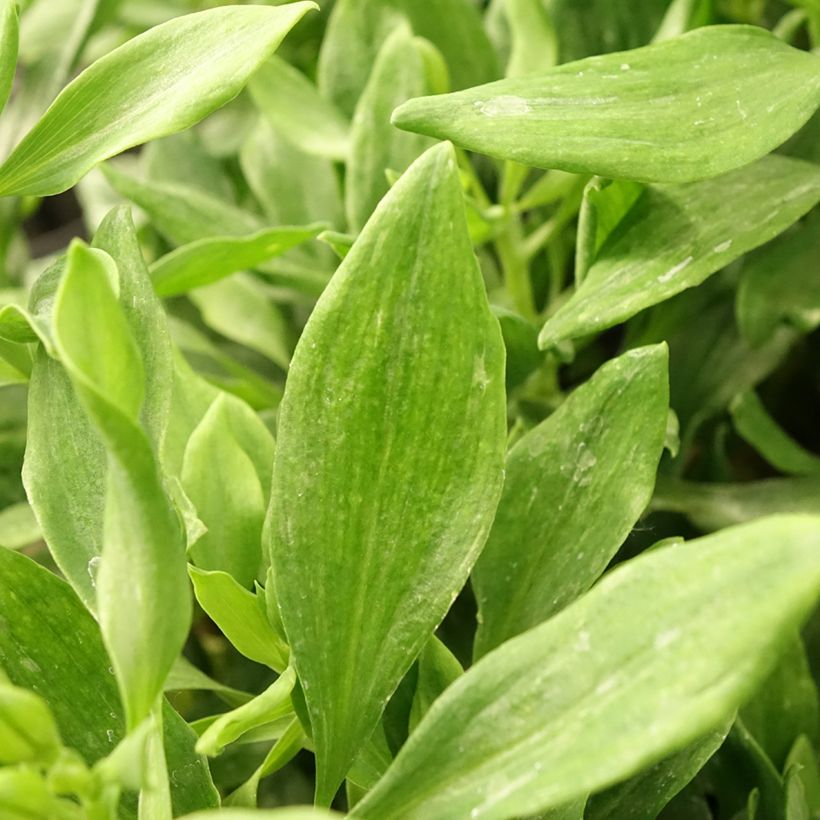

Flowering
Foliage
Plant habit
Botanical data
Alstroemeria
Duchesses Diane
Alstroemeriaceae
Peruvian lily 'Diane'
Cultivar or hybrid
Other Alstroemerias
Planting and care
Plant in spring, choosing a sunny or partially shaded location. Plant in light, well-drained, well-worked, sandy or loamy soil that is slightly acidic to slightly alkaline and not too fertile. While they appreciate some moisture to support their flowering, they adapt quite well to dry soils in summer. These plants are moderately hardy, down to -7°C (19.4°F), if the soil remains dry in winter. The stump can be protected with a thick mulch of leaves or fern fronds in autumn. Slugs love young shoots, so make sure to protect them.
Growing them in pots means they can be sheltered from severe frost combined with excessive humidity. Store them in a bright, well-ventilated, and minimally heated room.
Planting period
Intended location
Care
-
, onOrder confirmed
Reply from on Promesse de fleurs
Bulbs to grow in pots
Haven't found what you were looking for?
Hardiness is the lowest winter temperature a plant can endure without suffering serious damage or even dying. However, hardiness is affected by location (a sheltered area, such as a patio), protection (winter cover) and soil type (hardiness is improved by well-drained soil).

Photo Sharing Terms & Conditions
In order to encourage gardeners to interact and share their experiences, Promesse de fleurs offers various media enabling content to be uploaded onto its Site - in particular via the ‘Photo sharing’ module.
The User agrees to refrain from:
- Posting any content that is illegal, prejudicial, insulting, racist, inciteful to hatred, revisionist, contrary to public decency, that infringes on privacy or on the privacy rights of third parties, in particular the publicity rights of persons and goods, intellectual property rights, or the right to privacy.
- Submitting content on behalf of a third party;
- Impersonate the identity of a third party and/or publish any personal information about a third party;
In general, the User undertakes to refrain from any unethical behaviour.
All Content (in particular text, comments, files, images, photos, videos, creative works, etc.), which may be subject to property or intellectual property rights, image or other private rights, shall remain the property of the User, subject to the limited rights granted by the terms of the licence granted by Promesse de fleurs as stated below. Users are at liberty to publish or not to publish such Content on the Site, notably via the ‘Photo Sharing’ facility, and accept that this Content shall be made public and freely accessible, notably on the Internet.
Users further acknowledge, undertake to have ,and guarantee that they hold all necessary rights and permissions to publish such material on the Site, in particular with regard to the legislation in force pertaining to any privacy, property, intellectual property, image, or contractual rights, or rights of any other nature. By publishing such Content on the Site, Users acknowledge accepting full liability as publishers of the Content within the meaning of the law, and grant Promesse de fleurs, free of charge, an inclusive, worldwide licence for the said Content for the entire duration of its publication, including all reproduction, representation, up/downloading, displaying, performing, transmission, and storage rights.
Users also grant permission for their name to be linked to the Content and accept that this link may not always be made available.
By engaging in posting material, Users consent to their Content becoming automatically accessible on the Internet, in particular on other sites and/or blogs and/or web pages of the Promesse de fleurs site, including in particular social pages and the Promesse de fleurs catalogue.
Users may secure the removal of entrusted content free of charge by issuing a simple request via our contact form.
The flowering period indicated on our website applies to countries and regions located in USDA zone 8 (France, the United Kingdom, Ireland, the Netherlands, etc.)
It will vary according to where you live:
- In zones 9 to 10 (Italy, Spain, Greece, etc.), flowering will occur about 2 to 4 weeks earlier.
- In zones 6 to 7 (Germany, Poland, Slovenia, and lower mountainous regions), flowering will be delayed by 2 to 3 weeks.
- In zone 5 (Central Europe, Scandinavia), blooming will be delayed by 3 to 5 weeks.
In temperate climates, pruning of spring-flowering shrubs (forsythia, spireas, etc.) should be done just after flowering.
Pruning of summer-flowering shrubs (Indian Lilac, Perovskia, etc.) can be done in winter or spring.
In cold regions as well as with frost-sensitive plants, avoid pruning too early when severe frosts may still occur.
The planting period indicated on our website applies to countries and regions located in USDA zone 8 (France, United Kingdom, Ireland, Netherlands).
It will vary according to where you live:
- In Mediterranean zones (Marseille, Madrid, Milan, etc.), autumn and winter are the best planting periods.
- In continental zones (Strasbourg, Munich, Vienna, etc.), delay planting by 2 to 3 weeks in spring and bring it forward by 2 to 4 weeks in autumn.
- In mountainous regions (the Alps, Pyrenees, Carpathians, etc.), it is best to plant in late spring (May-June) or late summer (August-September).
The harvesting period indicated on our website applies to countries and regions in USDA zone 8 (France, England, Ireland, the Netherlands).
In colder areas (Scandinavia, Poland, Austria...) fruit and vegetable harvests are likely to be delayed by 3-4 weeks.
In warmer areas (Italy, Spain, Greece, etc.), harvesting will probably take place earlier, depending on weather conditions.
The sowing periods indicated on our website apply to countries and regions within USDA Zone 8 (France, UK, Ireland, Netherlands).
In colder areas (Scandinavia, Poland, Austria...), delay any outdoor sowing by 3-4 weeks, or sow under glass.
In warmer climes (Italy, Spain, Greece, etc.), bring outdoor sowing forward by a few weeks.

































